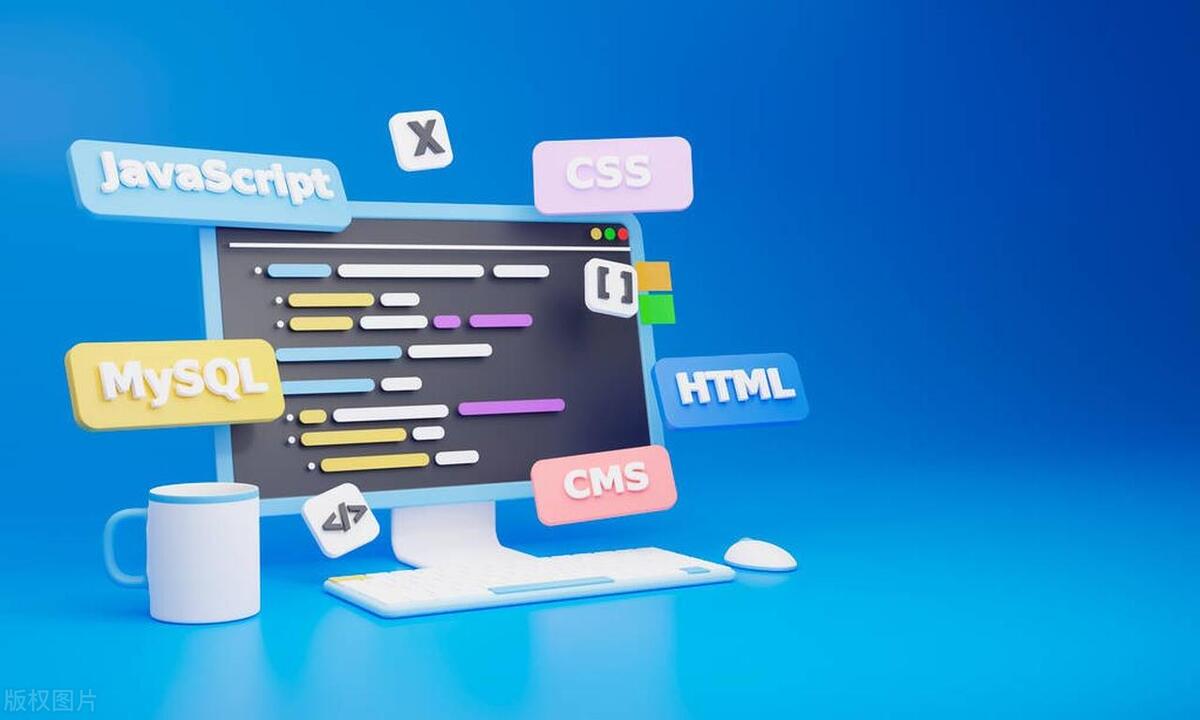Custom Hooks are a way to reuse state logic in React. It starts with use, calls other Hooks and returns data or methods; its core advantages are reuse logic, simplify components, and optimize structure; for example, useWindowSize can encapsulate window listening logic; when creating, naming specifications, calling Hooks at the top level, and returning values ??reasonably; when using it, pay attention to avoiding class components, reducing the number of parameters, and following a single responsibility; compared with higher-level components, Hooks are more intuitive and have no nesting problems; mastering the principles of naming, calling and responsibilities can improve code quality.

In React, a custom Hook is a way to extract component logic into a reusable function. It is essentially a JavaScript function starting with use , which can call other Hooks (such as useState , useEffect , etc.) to encapsulate some common state logic or side effects processing.

Why use a custom Hook?
As React's components become more complex, state logic tends to be scattered in multiple life cycle hooks or recurring between different components. Custom Hooks are used to solve these problems:

- Reuse state logic : instead of copy-paste code.
- Make components simpler : Extract complex logic, and components only focus on the UI layer.
- Better organization of code structures : grouped by function, not by life cycle.
For example: If you have multiple components that need to listen to window size changes, you can put this part of the logic into a useWindowSize custom Hook instead of writing each component once.
How to create a custom hook
The process of creating a custom Hook is actually very simple, you only need to follow a few rules and steps:

Name begins with
use
For example,useInput,useFetch,useLocalStorage, which is a React convention, which can ensure that the ESLint plug-in recognizes and checks whether the use of the Hook is correct.Call other Hooks internally
Custom Hooks must only call other Hooks at the top level and cannot be placed in loops, conditions, or nested functions.Return the data or method you need
You can return status values, update functions, boolean values, objects, etc.
Example: Create a useInput Hook
import { useState } from 'react';
function useInput(initialValue) {
const [value, setValue] = useState(initialValue);
const handleChange = (e) => {
setValue(e.target.value);
};
return {
value,
onChange: handleChange,
};
}Then you can use it in any component like this:
function NameInput() {
const name = useInput('');
Return (
<div>
<input {...name} />
<p>The name you entered is: {name.value}</p>
</div>
);
}Common Notes and Best Practices
Don't use custom Hooks in class components
Because a Hook can only be used in function components or other Hooks.Avoid passing too many parameters to the Hook
If your custom Hook receives many parameters, it may mean that it is too heavy to do so, consider splitting it into multiple smaller Hooks.Reasonably combine built-in Hooks
UseuseEffect,useRef, anduseCallbackto optimize performance or manage side effects.Maintaining a single responsibility principle
A Hook does only one thing, which makes it easier to test and reuse.
The difference between custom Hook and advanced components
Many people used advanced components (HOCs) to reuse logic, but HOCs have several disadvantages:
- It is easy to produce "nested hell"
- Props are easily overwritten or conflicted
- Unintuitive state sharing
By contrast, the Hook is more flat, intuitive, and has direct access to status and side effects without the need for packaging components.
Basically that's it. Custom Hooks are a very practical ability in React development. Although they seem simple, they can greatly improve the maintainability and reusability of the code in actual projects. Just remember a few key points: naming specifications, calling rules, and clear responsibilities, and you can write a useful and stable custom Hook.
The above is the detailed content of What are custom hooks and how do you create one in React?. For more information, please follow other related articles on the PHP Chinese website!

Hot AI Tools

Undress AI Tool
Undress images for free

Undresser.AI Undress
AI-powered app for creating realistic nude photos

AI Clothes Remover
Online AI tool for removing clothes from photos.

Clothoff.io
AI clothes remover

Video Face Swap
Swap faces in any video effortlessly with our completely free AI face swap tool!

Hot Article

Hot Tools

Notepad++7.3.1
Easy-to-use and free code editor

SublimeText3 Chinese version
Chinese version, very easy to use

Zend Studio 13.0.1
Powerful PHP integrated development environment

Dreamweaver CS6
Visual web development tools

SublimeText3 Mac version
God-level code editing software (SublimeText3)

Hot Topics
 How can CSS be used to implement dark mode theming on a website?
Jun 19, 2025 am 12:51 AM
How can CSS be used to implement dark mode theming on a website?
Jun 19, 2025 am 12:51 AM
ToimplementdarkmodeinCSSeffectively,useCSSvariablesforthemecolors,detectsystempreferenceswithprefers-color-scheme,addamanualtogglebutton,andhandleimagesandbackgroundsthoughtfully.1.DefineCSSvariablesforlightanddarkthemestomanagecolorsefficiently.2.Us
 Can you explain the difference between em, rem, px, and viewport units (vh, vw)?
Jun 19, 2025 am 12:51 AM
Can you explain the difference between em, rem, px, and viewport units (vh, vw)?
Jun 19, 2025 am 12:51 AM
The topic differencebetweenem, Rem, PX, andViewportunits (VH, VW) LiesintheirreFerencepoint: PXISFixedandbasedonpixelvalues, emissrelative EtothefontsizeFheelementoritsparent, Remisrelelatotherootfontsize, AndVH/VwarebaseDontheviewporttimensions.1.PXoffersprecis
 What are the key differences between inline, block, inline-block, and flex display values?
Jun 20, 2025 am 01:01 AM
What are the key differences between inline, block, inline-block, and flex display values?
Jun 20, 2025 am 01:01 AM
Choosing the correct display value in CSS is crucial because it controls the behavior of elements in the layout. 1.inline: Make elements flow like text, without occupying a single line, and cannot directly set width and height, suitable for elements in text, such as; 2.block: Make elements exclusively occupy one line and occupy all width, can set width and height and inner and outer margins, suitable for structured elements, such as; 3.inline-block: has both block characteristics and inline layout, can set size but still display in the same line, suitable for horizontal layouts that require consistent spacing; 4.flex: Modern layout mode, suitable for containers, easy to achieve alignment and distribution through justify-content, align-items and other attributes, yes
 What are CSS Houdini APIs, and how do they allow developers to extend CSS itself?
Jun 19, 2025 am 12:52 AM
What are CSS Houdini APIs, and how do they allow developers to extend CSS itself?
Jun 19, 2025 am 12:52 AM
CSSHoudini is a set of APIs that allow developers to directly manipulate and extend the browser's style processing flow through JavaScript. 1. PaintWorklet controls element drawing; 2. LayoutWorklet custom layout logic; 3. AnimationWorklet implements high-performance animation; 4. Parser&TypedOM efficiently operates CSS properties; 5. Properties&ValuesAPI registers custom properties; 6. FontMetricsAPI obtains font information. It allows developers to expand CSS in unprecedented ways, achieve effects such as wave backgrounds, and have good performance and flexibility
 What is the significance of Vue's reactivity transform (experimental, then removed) and its goals?
Jun 20, 2025 am 01:01 AM
What is the significance of Vue's reactivity transform (experimental, then removed) and its goals?
Jun 20, 2025 am 01:01 AM
ReactivitytransforminVue3aimedtosimplifyhandlingreactivedatabyautomaticallytrackingandmanagingreactivitywithoutrequiringmanualref()or.valueusage.Itsoughttoreduceboilerplateandimprovecodereadabilitybytreatingvariableslikeletandconstasautomaticallyreac
 How can CSS gradients (linear-gradient, radial-gradient) be used to create rich backgrounds?
Jun 21, 2025 am 01:05 AM
How can CSS gradients (linear-gradient, radial-gradient) be used to create rich backgrounds?
Jun 21, 2025 am 01:05 AM
CSSgradientsenhancebackgroundswithdepthandvisualappeal.1.Startwithlineargradientsforsmoothcolortransitionsalongaline,specifyingdirectionandcolorstops.2.Useradialgradientsforcirculareffects,adjustingshapeandcenterposition.3.Layermultiplegradientstocre
 How can internationalization (i18n) and localization (l10n) be implemented in a Vue application?
Jun 20, 2025 am 01:00 AM
How can internationalization (i18n) and localization (l10n) be implemented in a Vue application?
Jun 20, 2025 am 01:00 AM
InternationalizationandlocalizationinVueappsareprimarilyhandledusingtheVueI18nplugin.1.Installvue-i18nvianpmoryarn.2.CreatelocaleJSONfiles(e.g.,en.json,es.json)fortranslationmessages.3.Setupthei18ninstanceinmain.jswithlocaleconfigurationandmessagefil
 How does provide and inject allow for deep component communication without prop drilling in Vue?
Jun 20, 2025 am 01:03 AM
How does provide and inject allow for deep component communication without prop drilling in Vue?
Jun 20, 2025 am 01:03 AM
In Vue, provide and inject are features for directly passing data across hierarchical components. The parent component provides data or methods through provide, and descendant components directly inject and use these data or methods through inject, without passing props layer by layer; 2. It is suitable for avoiding "propdrilling", such as passing global or shared data such as topics, user status, API services, etc.; 3. Note when using: non-responsive original values ??must be wrapped into responsive objects to achieve responsive updates, and should not be abused to avoid affecting maintainability.






